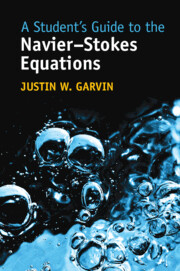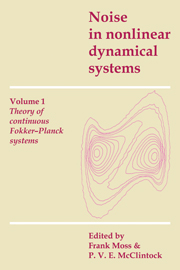A Student's Guide to the Navier-Stokes Equations
The Navier-Stokes equations describe the motion of fluids and are an invaluable addition to the toolbox of every physicist, applied mathematician, and engineer. The equations arise from applying Newton's laws of motion to a moving fluid and are considered, when used in combination with mass and energy conservation rules, to be the fundamental governing equations of fluid motion. They are relevant across many disciplines, from astrophysics and oceanic sciences to aerospace engineering and materials science. This Student's Guide provides a clear and focused presentation of the derivation, significance and applications of the Navier-Stokes equations, along with the associated continuity and energy equations. Designed as a useful supplementary resource for undergraduate and graduate students, each chapter concludes with a selection of exercises intended to reinforce and extend important concepts. Video podcasts demonstrating the solutions in full are provided online, along with written solutions and other additional resources.
- Written in a plain language and highly pedagogical style
- Derivations are provided in full, with each step and term clearly explained
- Online resources include an introductory video podcast, video demonstrations showing complete solutions for every exercise in the book, a full solutions guide, and additional written content
Reviews & endorsements
'The book reads easily and its production quality is good. … Graduate students and senior undergraduate students with a good background in differential equations can benefit from using this book. … Recommended.' M. Alam, Choice
Product details
February 2023Paperback
9781009236164
236 pages
228 × 152 × 12 mm
0.4kg
Available
Table of Contents
- Preface
- Acknowledgements
- 1. Mass conservation and the continuity equation
- 2. The material derivative: The first step to the Navier-Stokes equations
- 3. Force balance, the stress tensor, and the Navier-Stokes equations
- 4. The Navier-Stokes equations: Another approach
- 5. The energy equation and a discussion on diffusion and advection
- 6. Non-dimensionalalization and scaling
- Further reading
- Index.




